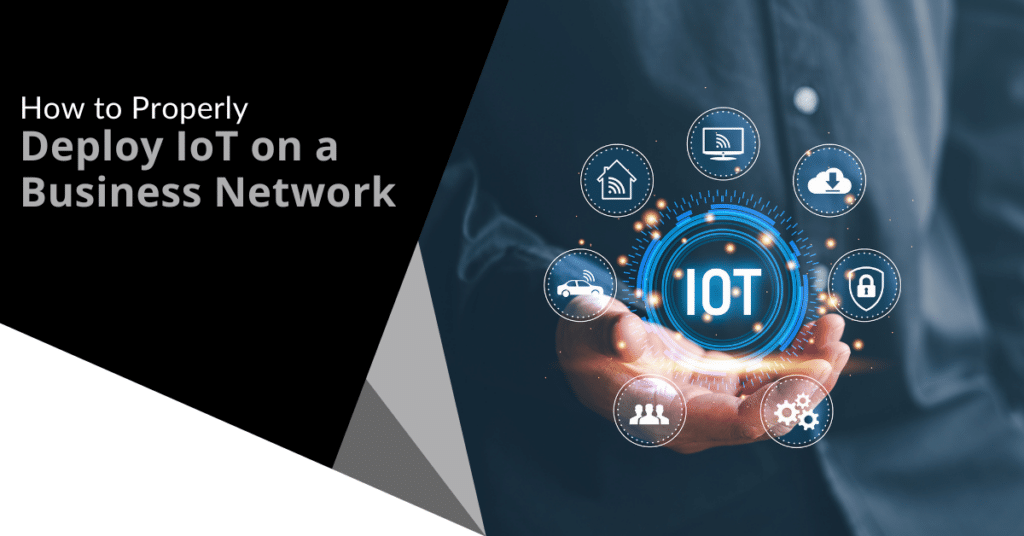|
Getting your Trinity Audio player ready...
|

The Internet of Things is no longer just a futuristic idea; it’s actively revolutionizing industries and reshaping business operations. IoT encompasses a wide array of internet-enabled smart devices, such as sensors that monitor production lines or thermostats that optimize energy usage.
Projections indicate a significant rise in the number of connected devices, from approximately 15 billion in 2023 to an estimated 21 billion by 2026. As these devices become integral to modern business processes, integrating them into existing networks can be challenging. This guide will help you navigate the complexities of implementing IoT solutions.
Step 1: Clarify Your Objectives and Requirements
Before diving into implementation, it’s essential to have a clear understanding of your objectives. Consider the following questions to align your IoT deployment with your business needs:
What problem are you trying to solve?
Determine if you aim to enhance operational efficiency, gain real-time data insights, or improve remote monitoring capabilities. Identifying the specific problem helps in targeting your deployment effectively.
What type of data will you collect?
Clearly define the type and amount of data your devices will generate. This information is crucial for selecting the appropriate network infrastructure.
What level of security is required?
Security needs vary depending on the sensitivity of the collected data. You may need to implement specific measures to protect against unauthorized access.
By addressing these questions, you’ll gain a better understanding of your specific needs, enabling you to choose the most suitable IoT devices and network solutions.
Step 2: Choose the Right Devices and Network Infrastructure
With your goals in mind, it’s time to select the appropriate components, including both devices and network infrastructure.
IoT Devices
When selecting smart devices, consider factors such as compatibility with your existing systems, data security features, scalability, and power requirements. Research reputable vendors and opt for devices with robust security measures, including strong firmware protection.
Network Infrastructure
Your current network may not be equipped to handle the additional traffic and data from IoT devices. You might need to upgrade bandwidth, set up separate networks , or invest in dedicated gateways to manage communication between devices and the cloud.
Step 3: Prioritize Security Throughout the IoT Process
Security is critical in this space, as compromised devices can serve as entry points for cyberattacks. In the first half of 2022, malware attacks on IoT devices increased by 77%. Key security considerations include:
Secure IoT Devices
Ensure that all devices are equipped with strong passwords and receive regular firmware updates. Opt for devices with features like encryption and secure boot.
Isolate IoT Devices
Create separate networks for IoT devices and core business systems to minimize the impact of potential security breaches.
Implement Network Access Control (NAC)
Use NAC solutions, such as multi-factor authentication, to restrict network access to authorized devices only. These measures help enforce security policies automatically.
Continuous Monitoring and Maintenance
Regularly monitor your network for suspicious activity and update security protocols and software to protect against evolving threats.
Step 4: Deploy and Manage IoT Devices
With hardware and security measures in place, proceed to deploy your IoT devices.
Tips for a successful deployment include:
- Following the manufacturer’s installation and configuration instructions carefully.
- Testing the functionality of devices before full network integration.
- Developing a comprehensive management strategy that includes maintenance, firmware updates, and issue monitoring.
Step 5: Ongoing Learning and Optimization
The IoT landscape is continually evolving, and so should your strategies.
Analyze Collected Data
Use the data gathered by your devices to gain insights, identify areas for improvement, and refine your approach.
Seek Feedback
Gather feedback from stakeholders within your organization to continuously refine your IoT implementation and tackle emerging challenges.
Stay Updated
Keep abreast of the latest trends and advancements to adapt and leverage new technologies as they arise.
Implementing IoT within your business network requires careful planning, a focus on security, and a commitment to continuous improvement.
Get Professional Assistance for Your IoT Integration
Looking for help with IoT adoption? We can assist in transforming your business operations and unlocking the full potential of smart devices. Contact us today to learn more.
Twintel has grown into an expansive, full team of IT services professionals, acting as the outsourced IT department of non-profits, small to mid-size businesses, and enterprise-level corporations in Orange County, across California, and nationally.
Today, it’s the strength and deep expertise of the Twintel team that drives positive outcomes for clients. Each of the support staff, technicians, and engineers works diligently each day to make sure that the companies served have the seamless, secure, and stable IT environments needed to allow them to pursue their organizational objectives.